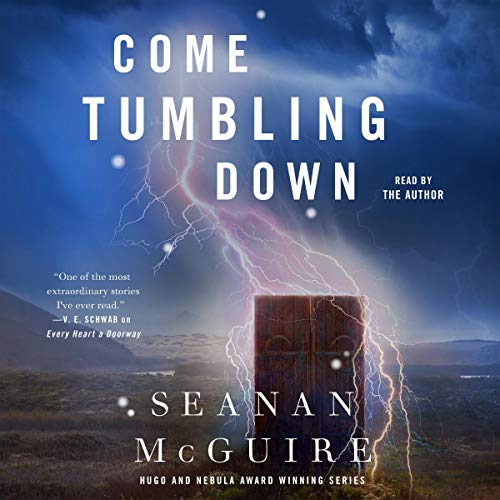 Come Tumbling Down (Wayward Children, #5) by Seanan McGuire
Come Tumbling Down (Wayward Children, #5) by Seanan McGuire Narrator: Seanan McGuire
Format: audiobook, ebook
Source: purchased from Amazon, purchased from Audible
Formats available: hardcover, ebook, audiobook
Genres: fantasy, portal fantasy, urban fantasy, young adult
Series: Wayward Children #5
Pages: 189
Length: 3 hours and 52 minutes
Published by Macmillan Audio, Tordotcom on January 7, 2020
Purchasing Info: Author's Website, Publisher's Website, Amazon, Barnes & Noble, Kobo, Bookshop.org, Better World Books
Goodreads
When Jack left Eleanor West's School for Wayward Children she was carrying the body of her deliciously deranged sister—whom she had recently murdered in a fit of righteous justice—back to their home on the Moors.
But death in their adopted world isn't always as permanent as it is here, and when Jack is herself carried back into the school, it becomes clear that something has happened to her. Something terrible. Something of which only the maddest of scientists could conceive. Something only her friends are equipped to help her overcome.
Eleanor West's "No Quests" rule is about to be broken.
Again.
My Review:
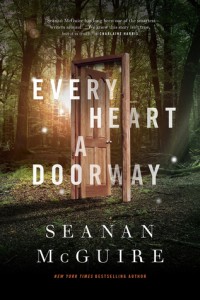 I’ve been winding my way through Seanan McGuire’s Wayward Children series for nearly three years now, since I first read Every Heart a Doorway back in early 2021. I’ve skipped around through the series and had both a grand and a thoughtful time each and every time I’ve returned to Eleanor West’s Home for Wayward Children.
I’ve been winding my way through Seanan McGuire’s Wayward Children series for nearly three years now, since I first read Every Heart a Doorway back in early 2021. I’ve skipped around through the series and had both a grand and a thoughtful time each and every time I’ve returned to Eleanor West’s Home for Wayward Children.
Clearly, you don’t have to read the series in order to get into it. Although it probably does help to read that first book, Every Heart a Doorway, first. And possibly, in this particular case, Down Among the Sticks and Bones before this one. But now I’m caught up with the whole thing, even though this particular book happens very much in the middle of the series.
All of that is to say that some of this review is bound to reflect my thoughts on the series as a whole because it’s just now whole for me, as well as this entry in the series in particular.
You have been warned.
Much as Jacqueline Wolcott warns her friends at Eleanor West’s Home for Wayward Children just before they follow her through the lightning-keyed door back to her home, the horror-movie hellscape called ‘The Moors’.
A place where EVERYTHING is ruled by science and powered by lightning, where vampires contend with mad scientists and resurrection is as commonplace as blood, where Frankenstein’s monster would be seen as just another citizen – and quite possibly was.
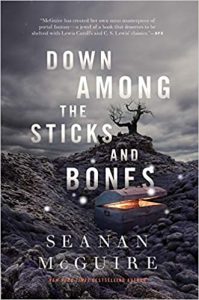 Jack is in dire straits when she returns to the school, and she needs the help of the only friends she can trust to see that, in spite of appearances, she’s still Jack even though she’s in her twin sister Jill’s body. They are the only people who know her well enough to understand that her OCD will not allow her to just adapt to living her life in the unclean thing that murdered her mentor – even if Jill’s full, entire, complete and utterly nefarious plot is to destroy both her sister Jack and the balance that keeps The Moors relatively safe and functional for the human population that was born to a world where vampires contend with mad scientists and drowned gods prey upon ships and shorelines, where the sun only rises behind thick clouds and lightning storms happen whenever the Moon wills it so.
Jack is in dire straits when she returns to the school, and she needs the help of the only friends she can trust to see that, in spite of appearances, she’s still Jack even though she’s in her twin sister Jill’s body. They are the only people who know her well enough to understand that her OCD will not allow her to just adapt to living her life in the unclean thing that murdered her mentor – even if Jill’s full, entire, complete and utterly nefarious plot is to destroy both her sister Jack and the balance that keeps The Moors relatively safe and functional for the human population that was born to a world where vampires contend with mad scientists and drowned gods prey upon ships and shorelines, where the sun only rises behind thick clouds and lightning storms happen whenever the Moon wills it so.
Jack needs help, so she’s gone to the one place where she knows she can get it. Even if it’s the one place she hoped never to return to, because it means that she’ll have to do the one thing she hoped she’d never have to do.
She’ll have to kill her twin sister. Again. She already did it once to save the world she was born to. She’ll have to do it again so that she can save the world that her heart calls home.
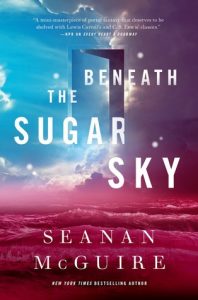 Escape Rating A-: The Wayward Children series winds itself around and around and back and forth and over and under and all over again. We first met the Wolcott twins in the very first book in the series, Every Heart a Doorway, but we don’t get their full story until the second book, Down Among the Sticks and Bones, while book three, Beneath the Sugar Sky, deals with the effects of their actions in Every Heart a Doorway.
Escape Rating A-: The Wayward Children series winds itself around and around and back and forth and over and under and all over again. We first met the Wolcott twins in the very first book in the series, Every Heart a Doorway, but we don’t get their full story until the second book, Down Among the Sticks and Bones, while book three, Beneath the Sugar Sky, deals with the effects of their actions in Every Heart a Doorway.
(After listening to the latest book in this series, Mislaid in Parts Half-Known, and liking it very much, I decided to grab this middle book in audio as well – although the readers are very different. The author herself narrates this story, as she did the previous books that featured the Wolcott sisters. McGuire has a formal, somewhat dry, no-nonsense delivery that is utterly fitting for the formal, somewhat dry, no-nonsense Jack Wolcott. Audiobooks just work better when the narrator fits the primary character’s voice and the author/narrator fit Jack to a ‘T’, even when Jack felt like she wasn’t fitting her own self very well at all.)
Come Tumbling Down is still dealing with the effects of Jill’s actions. Which have been the kind of actions that make her behavior and her very nature in this book make all that much more sense. As much as anything that happens in any of the worlds that the doors lead to make sense from the perspective of this world.
From the perspective of their own worlds, they are completely logical. Unless of course they are nonsense worlds to begin with.
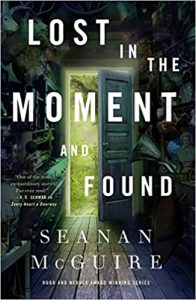 One of the core tenets of the whole, entire, Wayward Children series, something that is said by one character or another over the course of the series, is that “actions have consequences”. This particular entry in the series is the story of the consequences of Jill’s actions in The Moors, which were the consequences of Jill’s actions in our world and Jack’s response to those actions, which were, in their turn, a consequence of both of their reactions when they found their door to The Moors. All of which were the consequences of their parents’ treatment and conditioning of them when they were still under their parents’ thumbs and had never gone through a doorway at all.
One of the core tenets of the whole, entire, Wayward Children series, something that is said by one character or another over the course of the series, is that “actions have consequences”. This particular entry in the series is the story of the consequences of Jill’s actions in The Moors, which were the consequences of Jill’s actions in our world and Jack’s response to those actions, which were, in their turn, a consequence of both of their reactions when they found their door to The Moors. All of which were the consequences of their parents’ treatment and conditioning of them when they were still under their parents’ thumbs and had never gone through a doorway at all.
But that’s EXACTLY the kind of cause and effect that underpins this whole series. Which feels like it is set as a counterpoint to Narnia, where the Pevensie children went through the back of a wardrobe and lived an entire life to adulthood without their actions seeming to have had any consequences at all when they returned to the world they were born to.
As a result of their trips through the doors, the children return ill-adapted to the world where they were born. But that’s in the story. In reality – for certain select definitions of the word – what they exhibit upon their returns are psychological disorders that people are all too frequently misdiagnosed or not diagnosed as having for reasons that have more to do with either parental or medical or societal assumptions and/or expectations than they do with what the people coping or not coping are coping or not coping with.
Which is a long way around to say that there’s more to this series than initially meets either the eye or the reader’s mind. Now that I’ve finished the whole thing – at least so far – the whole thing gets deeper and more meaningful the further you get into it, no matter the order that you get into it in.
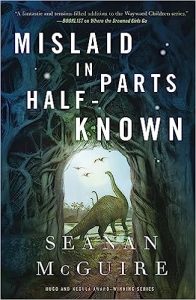 So, on the surface there’s a story about vampires and mad scientists set in a place that the great horror movies might have used for their inspiration – if not their actual setting. Underneath that there’s a deeper story about balances of power and how devastating it can be when those balances become unbalanced. And the story of one heroine who is willing to throw her own body into the breach – along with her sister’s corpse – to preserve that balance at truly any and every cost.
So, on the surface there’s a story about vampires and mad scientists set in a place that the great horror movies might have used for their inspiration – if not their actual setting. Underneath that there’s a deeper story about balances of power and how devastating it can be when those balances become unbalanced. And the story of one heroine who is willing to throw her own body into the breach – along with her sister’s corpse – to preserve that balance at truly any and every cost.
At its heart – beating with the power of unbridled electricity – there’s a love story about a young woman who fell so much in love with a monster and the world that created her that she was willing to do anything at all to preserve that happy ever after – even to become a monster herself.
But the soul of the series, in each and every story, is that ‘actions have consequences’ for good and for ill, and that the most important thing, to do and to be, is to ‘Be Sure’ that your choices are the ones that you can live with – or die by.

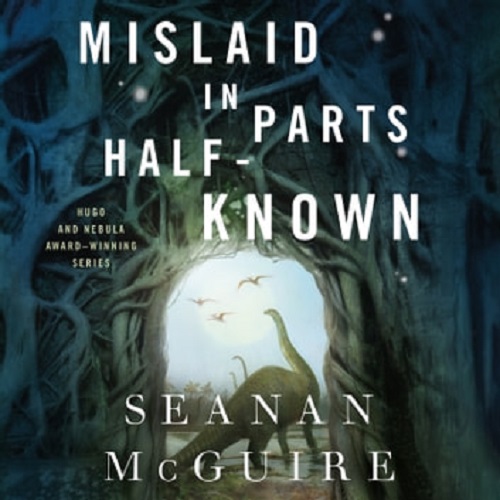 Mislaid in Parts Half-Known (Wayward Children, #9) by
Mislaid in Parts Half-Known (Wayward Children, #9) by 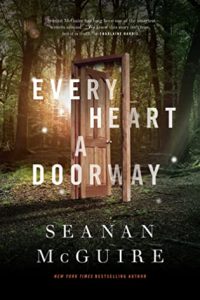 Beginning with
Beginning with 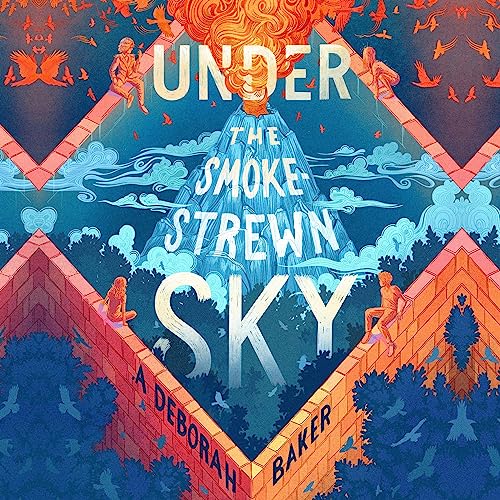 Under the Smokestrewn Sky (The Up-and-Under, #4) by
Under the Smokestrewn Sky (The Up-and-Under, #4) by 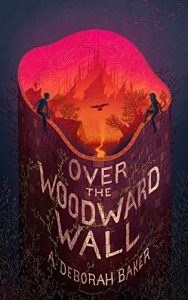 We have come, at last, to the final chapter of Zib and Avery’s journey into and hopefully through the Up-and-Under. It’s a journey that has taken them from their ordinary and mundane homes – even if Zib’s and Avery’s definitions of ordinary and mundane are entirely opposite to one another – and sent them along the Improbable Road on an equally improbable journey through every single one of the elemental kingdoms in the Up-and-Under.
We have come, at last, to the final chapter of Zib and Avery’s journey into and hopefully through the Up-and-Under. It’s a journey that has taken them from their ordinary and mundane homes – even if Zib’s and Avery’s definitions of ordinary and mundane are entirely opposite to one another – and sent them along the Improbable Road on an equally improbable journey through every single one of the elemental kingdoms in the Up-and-Under.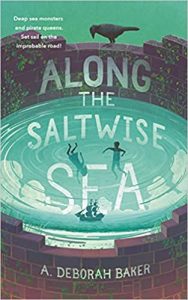 It’s Avery’s bit of stubborn backsliding that pushes the story off the Improbable Road and into their very last set of adventures in the Up-and-Under. Adventures that will have a much bigger impact than any of them imagined when they began.
It’s Avery’s bit of stubborn backsliding that pushes the story off the Improbable Road and into their very last set of adventures in the Up-and-Under. Adventures that will have a much bigger impact than any of them imagined when they began.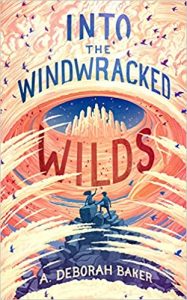 No matter the age of the protagonists, this has been the story of an epic fantasy quest that combines bits of Narnia with elements of Wonderland. Zib and Avery have been brought to the Up-and-Under to fix what’s gone wrong there, while for Zib and Avery the quest is to find their way home. It’s not going to end in a big battle between good and evil, because those concepts aren’t exactly the same in the Up-an-Under as they are back home. Instead, it’s a quest to put the out-of-balance back into balance – even if some of what they see looks like evil to Zib and Avery’s – especially Avery’s – eyes.
No matter the age of the protagonists, this has been the story of an epic fantasy quest that combines bits of Narnia with elements of Wonderland. Zib and Avery have been brought to the Up-and-Under to fix what’s gone wrong there, while for Zib and Avery the quest is to find their way home. It’s not going to end in a big battle between good and evil, because those concepts aren’t exactly the same in the Up-an-Under as they are back home. Instead, it’s a quest to put the out-of-balance back into balance – even if some of what they see looks like evil to Zib and Avery’s – especially Avery’s – eyes.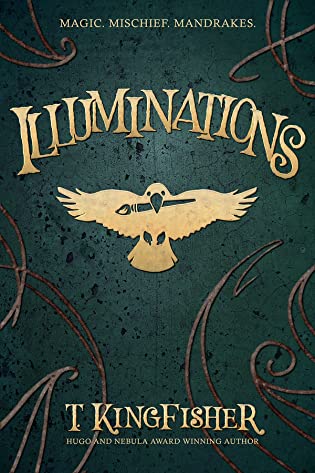 Illuminations by
Illuminations by 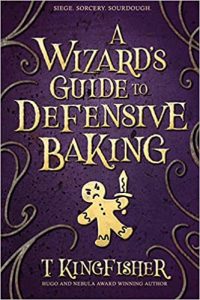 Escape Rating B: I picked up Illuminations because I was hoping for another incredibly awesome book like
Escape Rating B: I picked up Illuminations because I was hoping for another incredibly awesome book like 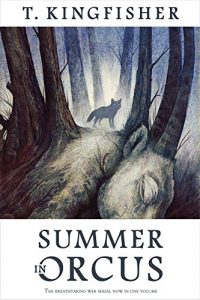 While the recommendations I’ve seen say that if I want more like
While the recommendations I’ve seen say that if I want more like 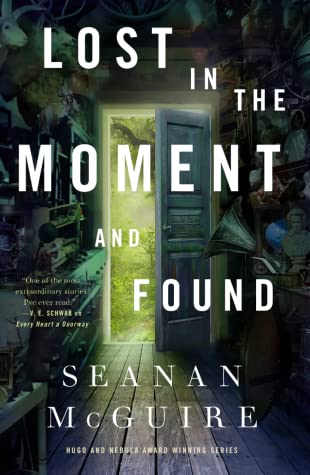 Lost in the Moment and Found (Wayward Children, #8) by
Lost in the Moment and Found (Wayward Children, #8) by 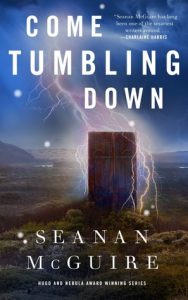 Which won’t stop me from reading the next book in the
Which won’t stop me from reading the next book in the 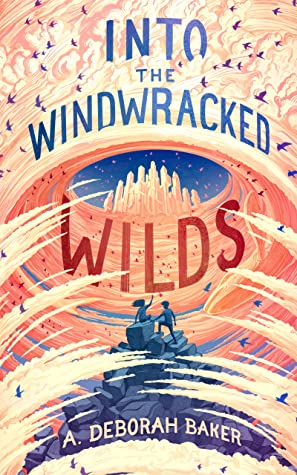 Into the Windwracked Wilds (The Up-and-Under, #3) by
Into the Windwracked Wilds (The Up-and-Under, #3) by 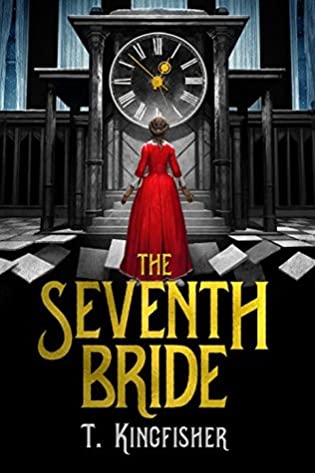 The Seventh Bride by
The Seventh Bride by 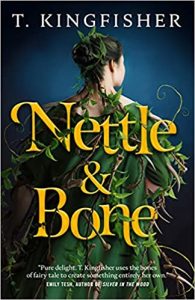 It also reads like a bit of a ‘dress-rehearsal’ for
It also reads like a bit of a ‘dress-rehearsal’ for 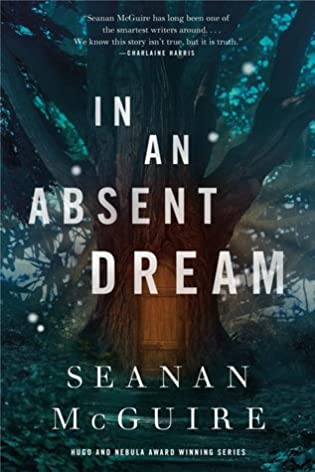 In an Absent Dream (Wayward Children, #4) by
In an Absent Dream (Wayward Children, #4) by 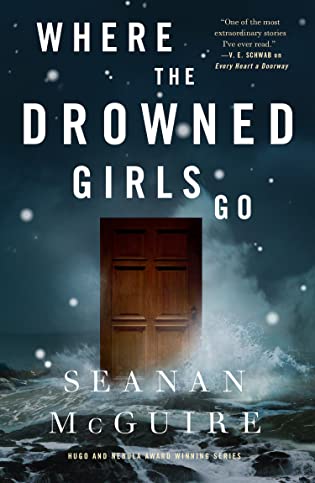 Where the Drowned Girls Go (Wayward Children, #7) by
Where the Drowned Girls Go (Wayward Children, #7) by 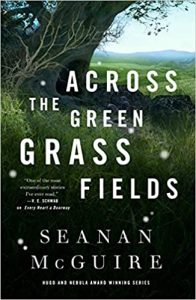 While this particular entry in the series turned out to be an unexpected readalike for
While this particular entry in the series turned out to be an unexpected readalike for 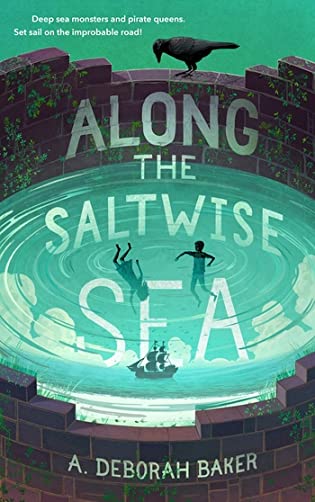 Along the Saltwise Sea (The Up-and-Under, #2) by
Along the Saltwise Sea (The Up-and-Under, #2) by 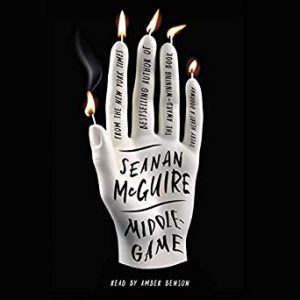 But very little happens – at least until the very end when suddenly a lot happens all at once, a bit of how the world works gets explained, and the Improbable Road finds them again and whisks them off to more adventure.
But very little happens – at least until the very end when suddenly a lot happens all at once, a bit of how the world works gets explained, and the Improbable Road finds them again and whisks them off to more adventure.